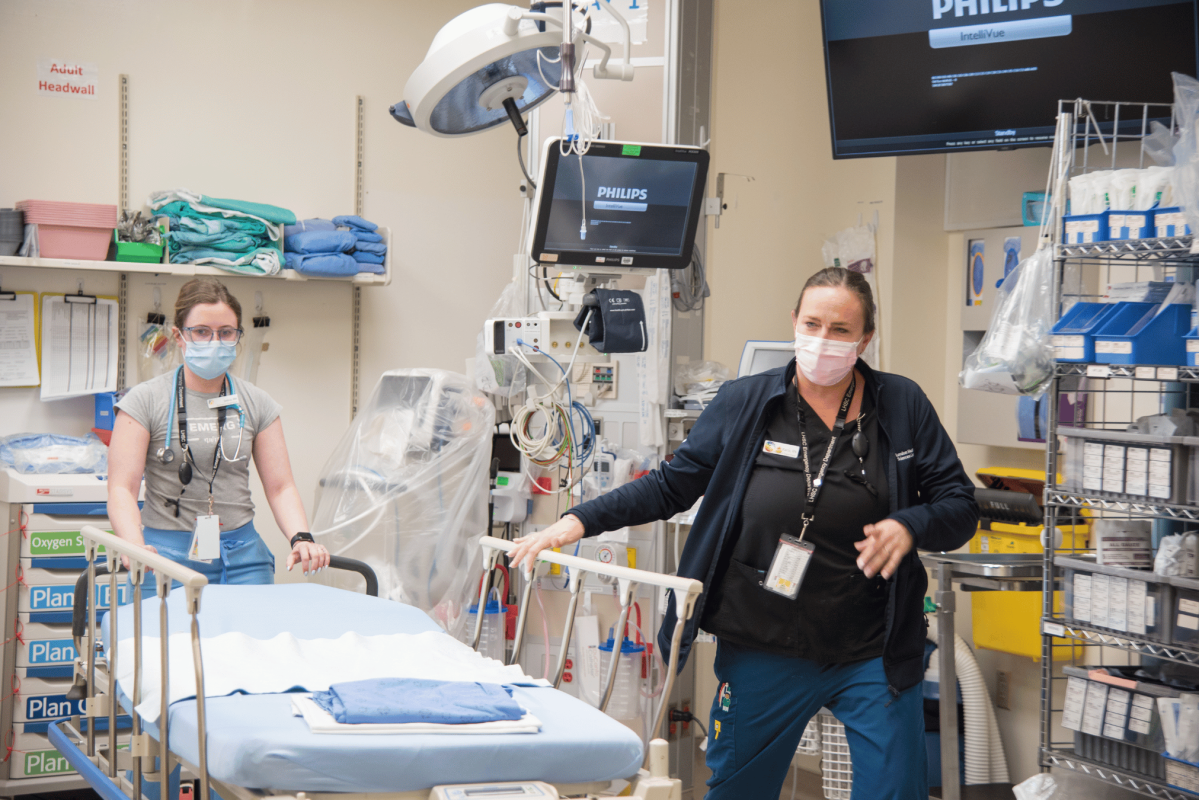What was previously a two-hour wait for paramedics to transfer their care to emergency department staff is now taking less than 40 minutes.

Since November 2023, London Health Sciences Centre (LHSC) has been successful in reducing wait times and is now implementing numerous processes both in the emergency department and across the organization.
In turn, this frees up paramedic partners to return to service in London and respond to new 911 calls for health emergencies. Part of improving ambulance offload time (AOT) is also changing how patients are admitted to the hospital.
“Across the organization, we are continuing to look and continually on an improvement journey,” says Dr. Christie MacDonald, physician department head of emergency medicine at LHSC. “Within the emergency department, we’re changing our pathways of patients to shorten wait times. For instance, we have an intermediate zone that streams patients that are receiving care slightly differently.”
Now, regardless of how patients arrive to the LHSC emergency department, they are immediately triaged and then transitioned to one of three care spaces: immediately into a space for physician assessment and treatment, to a stretcher or to a chair.
“In an effort to improve ambulance offload time, in November we used two key strategies that have also proven successful at other Ontario hospitals in terms of AOT,” MacDonald says. “The team created fast and drastic change and we saw immediate improvement here.”
Once an available bed is assigned to patients in the emergency department, units can expedite the movement of the patient in under an hour.
Though the processes in place speed up AOT, patients visiting emergency departments may still experience wait times. LHSC, and most other publicly funded hospitals, treat the most critically ill and injured patients first.
“Everyone follows the same system,” MacDonald says. “If you’re coming in by EMS (or walking), you’ll either be placed immediately into a care spot for resuscitative cases, for instance, you may be placed in a hallway horizontal wait room care spot or from EMS stretcher you may be placed in the wait room following triage.”
COVID-19 and provincial funding cuts have put a toll on AOT as well as wait times. Now, LHSC and other hospitals in Ontario are beginning to recover. For example, a wait time earlier in the pandemic was 26 hours or more but has now dropped to around six hours. Though there are still fluctuations in times, the burden on patients, doctors, paramedics and hospital staff is being reduced.
“Ambulance time is one measure that we’re putting in place. There are a number of other measures to ensure timeliness of care both within the emergency department and across the organization that will help with flow of patients,” MacDonald says.








Comments